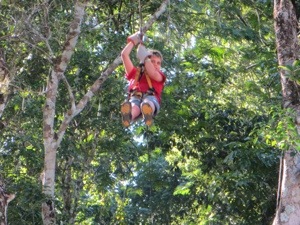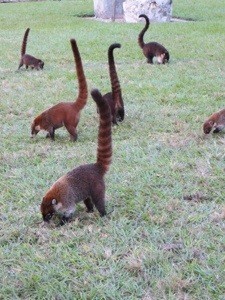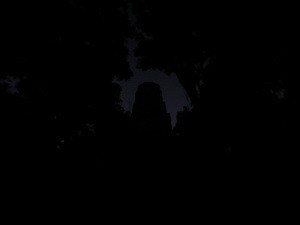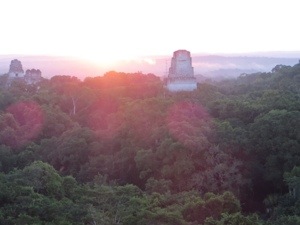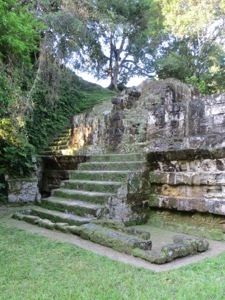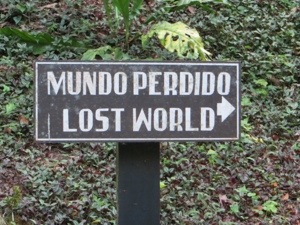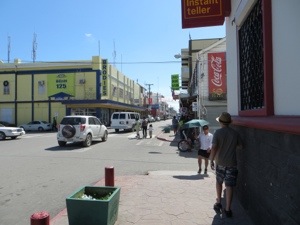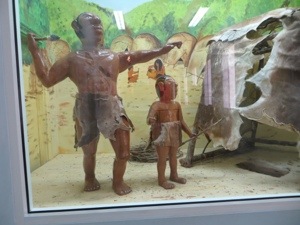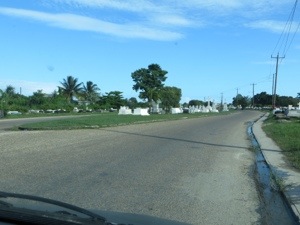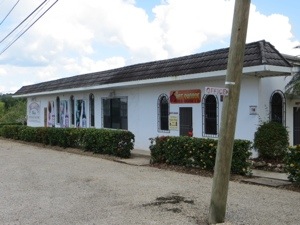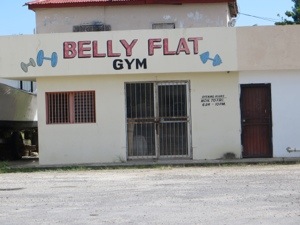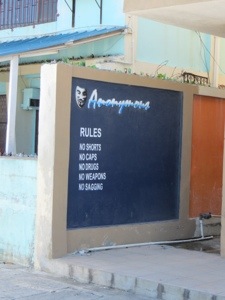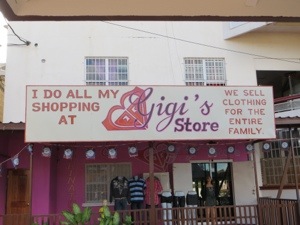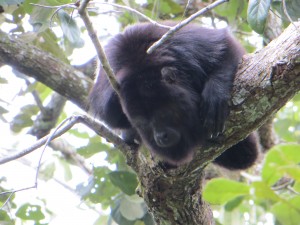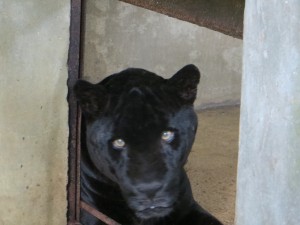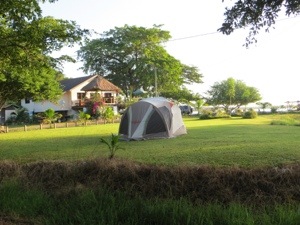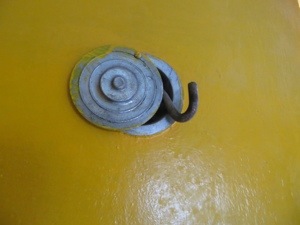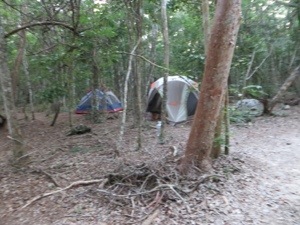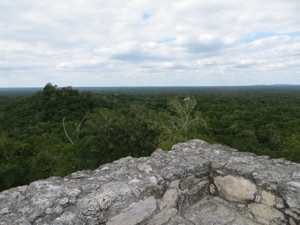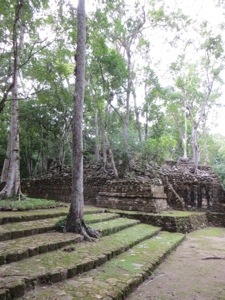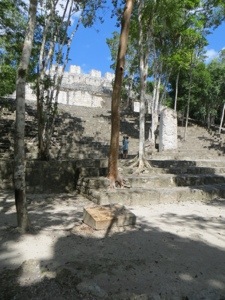When we talked to people in and around Tikal, they all agreed that it would take about seven hours to drive from there to Antigua, our next destination. We had arranged to spend a week in Antigua, attending one of the many Spanish schools in town, and were already a day behind schedule. So we set out bright and early (for us) and got on the road, confident that we would arrive in Antigua before nightfall.
The Guatemalan countryside is in general quite lovely, but it doesn’t go by nearly as quickly as one might think. Or plan. Or hope. All of the roads had only two lanes, and were populated with vehicles of all descriptions and velocities. Some went faster that we did, but most went slower. We spent a lot of time waiting to pass on twisty mountain two-lane blacktops.
Eventually we learned the local technique of passing slower traffic just about anywhere, regardless of curves, hills, or painted lines. If oncoming traffic appeared suddenly, well, everybody just did their best to avoid collision. It works surprisingly well, if somewhat nerve-wracking.
Still, at 4:30 PM, about an hour before sunset, Guatemala City was still a long way off, and Antigua another hour beyond that. We increased speed to warp ohmigod, with E displaying some truly impressive moves, but it soon became clear there was no way we’d make it before dark. I looked through our various books for a place to stop for the night, found some possibilities only a little out of the way, and we watched for a sign of the road there.
But nothing here is easy to find. Eventually, as dusk approached, we stopped by the side of the road, staring at the map and trying to find out where we were, in the middle of Guatemalan cowboy country. Literally.
Then Joe noticed that we had stopped very close to, of all things, a water park. With a motel next door. In Rio Hondo, Guatemala. W. T. F?
The motel turned out to be perfectly reasonable, if a little more expensive than we’d like, owing to its proximity to the water park. Nor was the park particularly inviting, as the weather was chilly (at around 6500 feet in altitude). But the room was fine, the food not bad, and the internet connexion quite possibly the fastest we’ve encountered in this journey. Huh?
Up early (for us) the next morning, and back on the road. Made it into Guatemala city by 2:00. Nothing to do there but zip right through and on to Antigua.
Uh-huh.
I’ve decided that in Purgatory, people are forced to drive through Guatemala City. In Hell, they do the same, but they’re given maps. There are no street signs, and nothing in town bears any resemblance to what the map shows. We were completely lost in town for at least two hours, got lots of directions from a number of very nice people, and finally managed to get out of town in the right direction.
We arrived in Antigua just before dusk, only forty-eight hours late for school.



